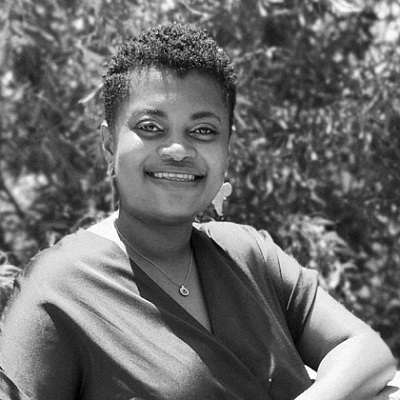We can only fix what we know but the reality is what we know is often limited by the data we have and the level of disaggregation of this data. The reality is that often we have data on those who visibly occupy or are close to positions of privilege in identity whether based on race or gender, as well as their access to resources, higher levels of education, their social status and ability to maneuver in a system of patriarchal privilege. In leaving no one behind we reflect on who and what we know right now and how we can build up this evidence base.
In our work at the Web Foundation, we know that men have more access to the digital world than women - Web Foundation analysis has found men are 21% more likely to be online than women globally— rising to 52% in the world’s least developed countries (LDCs). We know men are better connected and often the digital space is designed to address their needs. We also know that critical responsive policies and research on gender issues are missing. Very few countries — particularly in the Global South — have technology policies and strategies that target the gender digital divide. Moreover, most countries do not collect the data they need to understand the issue and formulate policy to address it. Just 24 countries in Africa and Asia submit sex-disaggregated data on internet access to the International Telecommunications Union, and many countries do not conduct any surveys on ICT access and use. There is a gender digital gap, that if we fail to work towards closing it we risk opening up a new front of inequality that could set women and girls in their diversity, back a generation.
Our response to leaving no one behind is to understand inequality of marginalised groups online. We have been working on women’s rights online since 2015 with our initial survey in 9 cities focused on understanding access and the issues women face in accessing the internet. This time we put our focus on nationally-representative surveys in a smaller number of countries in diverse regions — Latin America, South Asia, East and West Africa. We are looking at the quality of access with our meaningful connectivity standard and question whether the digital spaces where we want no one to be left behind will ensure women and girls agency and guarantee of human rights while online.
Our contribution to the dearth of data is to take a mixed methods approach that provides the numbers on the gender digital gap, and complements these by capturing experiences through focus group discussions and hearing reflections from civil society and policy makers (key informant interviews) in four countries - Colombia, Ghana, Indonesia and Uganda. Our quantitative and qualitative methodological approach allows us to dive deeper into the findings and comparative trends of women’s internet access and use.
We surveyed almost 10,000 women and men across varying demographics to understand women's rights online, 49 and 51 percent of which were men and women, respectively. Similarly, 45 percent of the respondents were from rural areas, with the rest from urban areas. The share of men and women across urban and rural areas was the same in both geographical areas. By disaggregating the data by gender and location, we were able to analyze how the barriers preventing people from connecting differed along those two dimensions. We also disaggregated the data by age, level of education, primary occupation, and income group: all of which are demographic factors that need to be taken into account when analyzing the barriers people face to connecting to the internet.
From the numbers, we found progress in reducing gender gaps in basic internet access in Ghana, Colombia and Indonesia is encouraging. In Ghana, men are just six percent more likely to be online than women, while Colombia and Indonesia are almost at parity. Uganda has a much larger gap of 43%, though this is lower than Africa’s gender gap of 50 percent on average. By assessing the data by location, we were able to find that digital literacy was a particular barrier for women in rural areas, with half of non-users saying a lack of know-how kept them offline, compared with 45 percent of men in rural areas.
The qualitative approach in each country, pulled together insights from four focus groups split by income and location, in two women-focused groups and two mixed (men and women) groups. The emphasis on women in the focus groups discussions is to ensure we have a space where women are able to freely express themselves. Our key informant interviews helped to understand the way in which policy makers and civil society approach the issues of the gender digital divide and reflect with them the reality on the ground. The focus group discussion helped in understanding the social and cultural nuances with regards to experiences online. For example, women were found to be more concerned about personal information online and in the focus groups this was related to how the information may raise a concern for their safety:
“Because as a lady I get many stalkers offline. Now imagine what will happen when I put all my personal information online. I feel violated if I keep getting contacted by strangers.”
- Uganda urban female participant, October 2019
When research is designed with the aim to understand experiences of marginalised communities on the basis of gender, we can develop solutions that ensure no-one is left behind. However, we acknowledge our limitation with this work - we only covered four countries and approached it from a female/male woman/man binary approach. Gender is a spectrum and more research is needed to truly understand how the digital gaps we are seeking to close do not leave anyone on the spectrum. There is a need for more commitment and resources to build up the evidence.
Everyone benefits when we address gender inequality and more so when we close the gender digital gap. Digital equality is important not only for individual rights and empowerment, but also as a vital driver of economic growth and prosperity. It is clear that there is really a need for continued ways of knowing the extent of the gender digital divide, the issues that impact women and girls' ability to be actively present online and their human rights upheld.
We can only do this with data. Data that is intersectional. Data on gender divide. Data on digital divide. Gender-disaggregated data.

